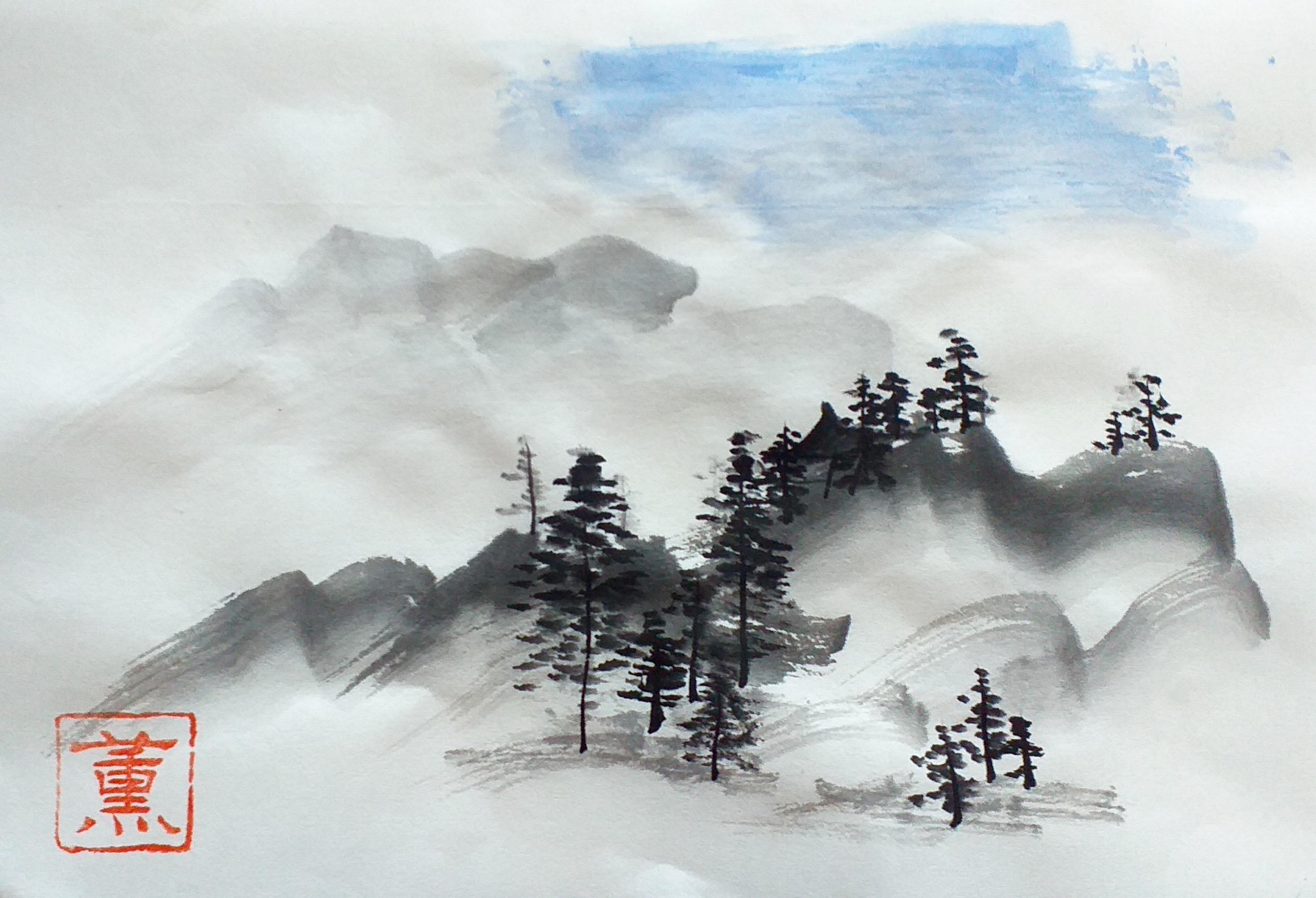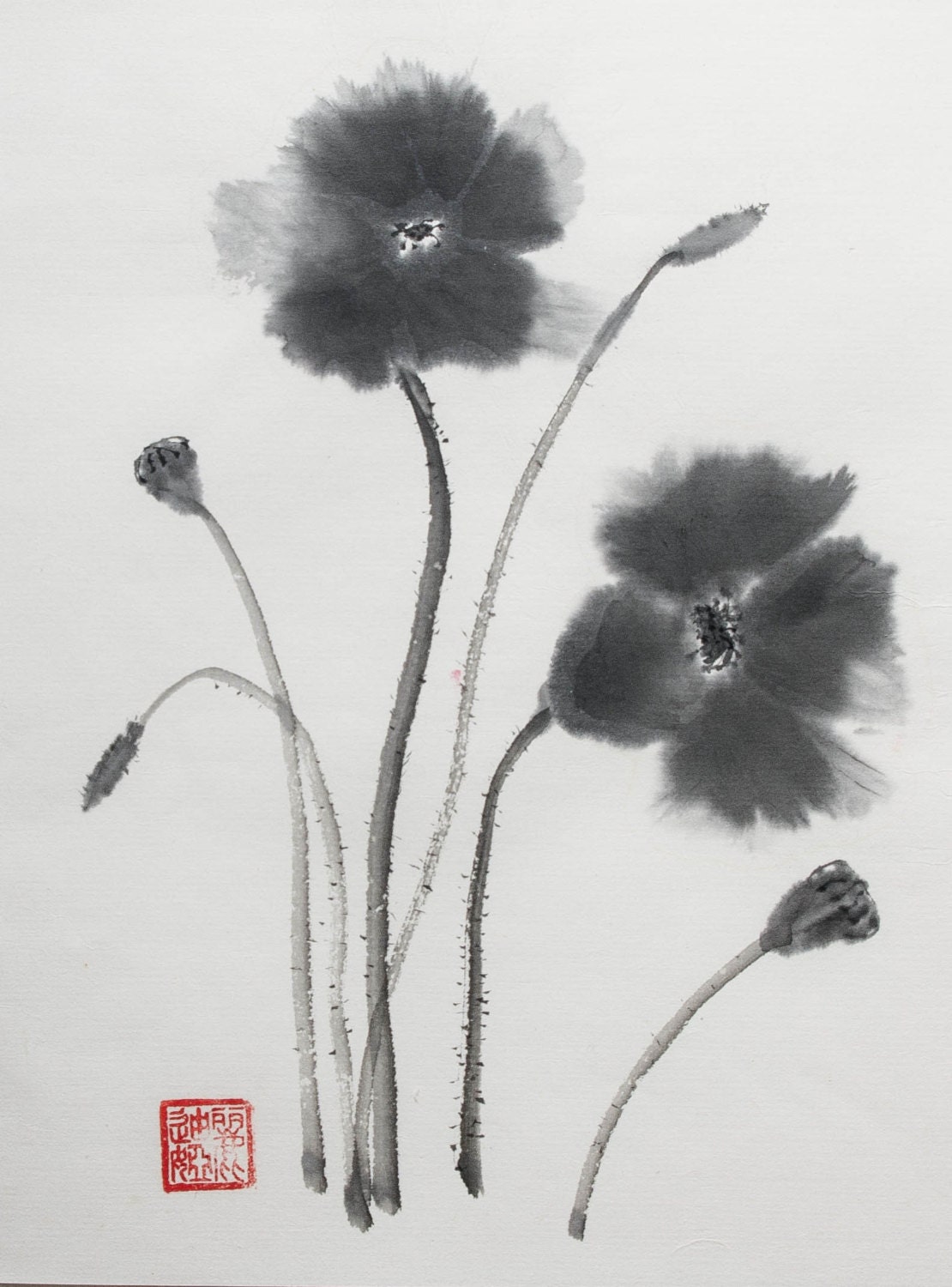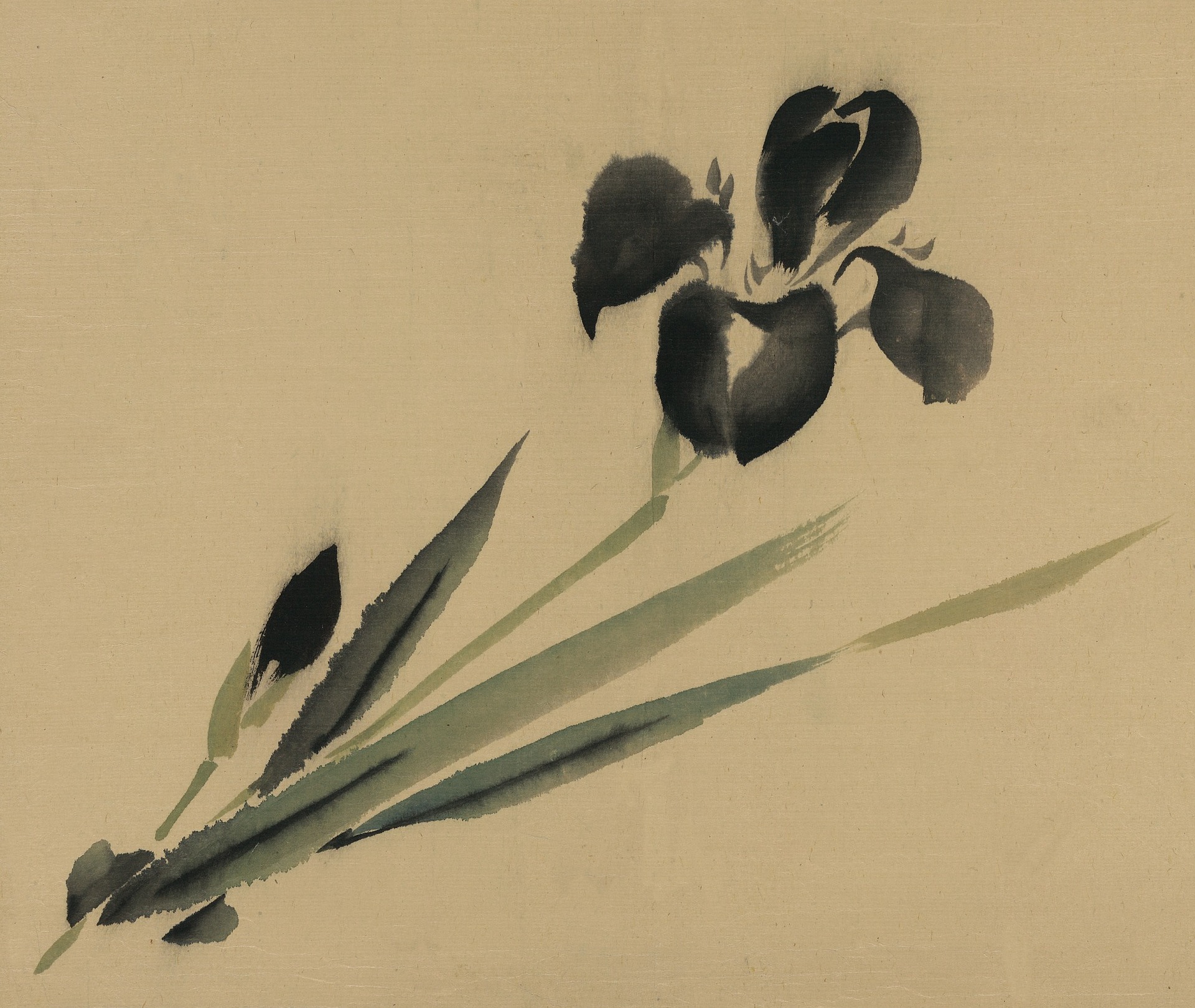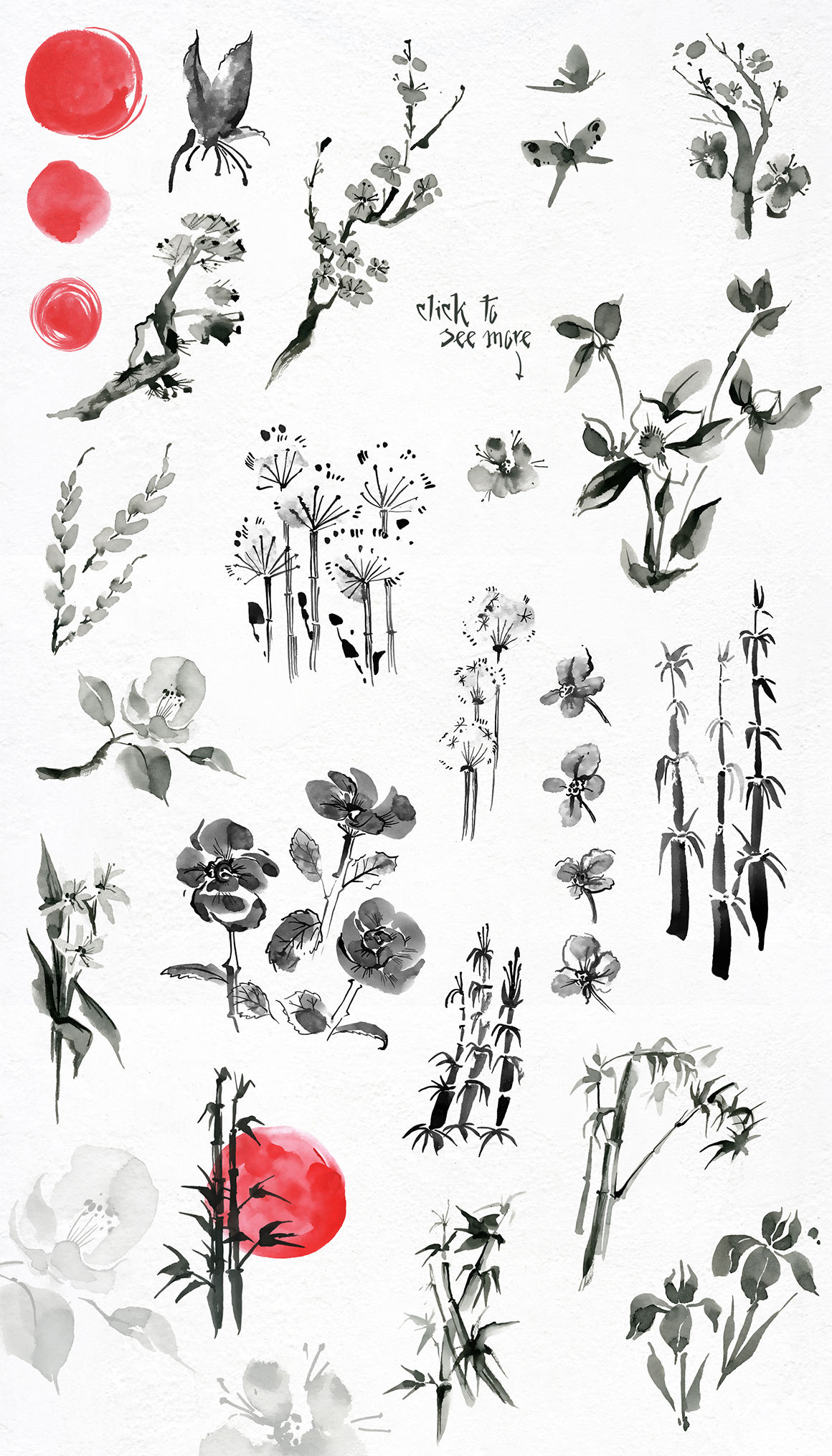
Abstract Art Ink Painting Original Sumi Ink Painting Etsy Ink painting, Original paintings
Japanese painter Kiyo Hasegawa talks about Sumi ink in Nihonga (日本画). Sumi ink is traditionally used to draw the outlines of the motif in black, before paint.

Landscape Painting in "Sumi" (ink) / Shin Takahashi Kakejiku Scroll
Introduction to Sumi-e Painting: 5 Basic Ink Techniques Step into a journey of self-discovery through the ancient art of Sumi-e painting.

Online Course of Sumie · Japanese Ink Painting · Kaoru Hirose
67 2 Download Favorite Sumi-e (墨絵風) also known as suiboku-ga, is Japanese monochrome ink painting or 'ink wash painting'. Sumi-e paintings in essence are beautiful forms of art, and they traditionally encompass philosophy as well. The origin of sumi-e paintings have roots in Chinese calligraphy, which can be noted by the similar brush strokes.

Sumi ink not just for calligraphy!
Sumi-e painting is a traditional Japanese art form that dates back to the 14th century. It is characterized by its minimalist style, using only black ink and a brush to create beautiful and expressive images.

Seven Tips for SumiE Painting hubpages
Sumi-e, or Japanese ink painting, has been practised in Japan since the fourteenth century, when Zen Buddhist monks from China brought over their own uses of ink. Japanese Sumi-e today harnesses the power of the line to combine bold brushstrokes with poetry, creating paintings in which each element is alive. Takumasa Ono has been the National.

Sumie Japanese Ink Painting I with Takumasa Ono Bagri Foundation celebrating Arts and
Connect with Japanese zen philosophy and let your energy flow through expressive ink brush strokes as Japanese artist, Koshu, guides you through this ancest.

Suibokuga Japanese ink painting Sumie Floral Spring is coming
Sumi-e, which means "ink painting" in Japanese, is a traditional art form that originated in China and was later adopted and refined by Japanese artists. What sets Sumi-e apart from other forms of painting is its emphasis on minimalism. In Sumi-e, the artist uses only black ink and a brush to create their artwork.

Sumi e Poppies by Sibby S in 2022 Japanese painting, Japanese art, Japanese watercolor
Appealing and easy, Japanese ink painting emphasizes suggestion, simplicity, and harmony with nature - how to capture the essence of an object using the fewest, quickest brushstrokes.. Here is everything you need to know to get started in the art of 'sumi-e'. All materials and techniques are covered, including grinding ink, handling the.

Japanese Ink Painting Suibokuga Sumie Chinese Brush
Japanese Sumi-e ink painting is a traditional art form that has captivated artists and art enthusiasts for centuries. With its minimalistic approach and emphasis on brushstrokes, Sumi-e offers a unique and profound way of expressing the beauty of the natural world. In this section, we will explore the importance of mastering brushstrokes in.

Sumi Bamboo Painting Sumie Ink Drawing Japanese sahelizabeth
In this program, students will learn about the art of Japanese ink painting, known as sumi-e: "sumi" meaning "ink" and "e" meaning "picture." Thousands of artists from all over Asia.

Sumie Japanese Art Art Home Japanese Ink Painting, Sumi E Painting, Korean Painting
Japanese ink painting, or sumi-e, is the embodiment of Japanese aesthetics. Using just simple black ink and carefully curated white space, sumi-e captures the timeless beauty and complexity of the natural world.

Japanese Sumi E Painting at Explore collection of Japanese Sumi E Painting
Both describe painting performed by the use of ink on paper, but whereas "sumi-e" just describes ink painting in general, "suiboku-ga" rather is seen as a part of sumi-e - by mixing ink with more or less water, it lays emphasis on shading, different ink tonalities and the combination of various ink tones. In suiboku-ga, the main.

Pin by Red Matter on Sumie Chinese landscape painting, Japanese ink painting, Japanese art ink
Japanese artist Koshu guides you through this ancestral art form using ink brush strokes and a meditative practice to create deeply expressive artwork. Discover a thousand-year-old practice that is both a form of expression and a way of setting the mind.

Landscape Painting in "Sumi" Ink / Katō Tomo Kakejiku Scroll
Japanese ink painting, (sumi-e) is the art of painting using brush (fude), ink (sumi) and thin absorbent "rice-paper" (washi). Patricia Larkin Green will be instructing 5 classes of Sumi-e (each 2 hr long). Advance at your own pace, you do not need to know how to paint with ink, all levels are welcome, and course materials will be provided.

JPAG's ART BLOG First Attempts to Ink Wash Painting with Sumi Ink
Ink is a liquid with a pigment or dye based colouring used for painting, drawing and printmaking purposes. The characteristics of ink vary wildly to suit specific applications. The term 'ink' is used to describe thick buttery substances, as well as liquids that will drip from a pipette. Lightfast inks tend to be made with pigments held.

Sumie. Japanese ink painting. By Dinkoobraz illustration TheHungryJPEG
Sumi, or black ink has been used to draw suiboku-ga, or ink painting, and do calligraphy. With the use of just black ink, the artists' feelings are exuded through calligraphy, also various living beings such as people and sceneries can be freely depicted as if by magic.